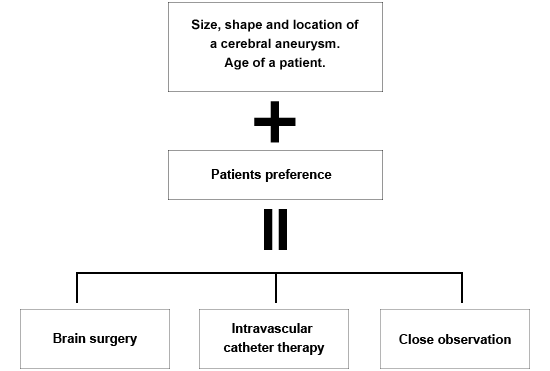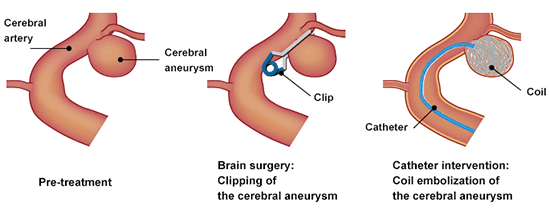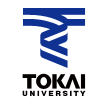- HOME
- For Patients
- Unruptured cerebral aneurysms
- Treatment of Unruptured cerebral aneurysms
Unruptured cerebral aneurysms
- About unruptured cerebral aneurysms
- Diagnosis of unruptured cerebral aneurysms
- Treatment of unruptured cerebral aneurysms
Treatment of unruptured cerebral aneurysms
Surgery to prevent subarachnoid hemorrhage
At present, no treatments other than surgery are capable of preventing the rupture of an unruptured cerebral aneurysm. Surgery may be broadly divided into clipping (craniotomy), in which a craniotomy is performed and the base of the aneurysm is closed with a metal clip similar to a clothes peg, and coil embolization (endovascular treatment by catheterization), in which a catheter is inserted as far as the aneurysm from a vessel in the groin (the femoral artery), and platinum coils are packed into the aneurysm. In both cases, the aim of the procedure is to cut off the blood flow through the cerebral aneurysm, and the type of treatment chosen will depend on both the size and the site of the aneurysm, as well as factors such as age and patient preferences. Surgical treatment is also not without risk. Cerebral aneurysms do not always rupture, and surgical treatment should be carefully considered for small aneurysms and in elderly patients. The decision on whether to perform surgery must be made by weighing the risk that the patient's state may worsen if an aneurysm has ruptured against the risk that surgery may cause the patient’s state to worsen. Depending on the situation, the best method of treatment may be to monitor the patient's course without performing surgery.
[ A diagram of treatment selection of unruptured cerebral aneurysms ]

[ Treatment option of a cerebral aneurysm ]

If a patient's course is monitored, a second set of tests is performed within 3 months of the initial discovery of the cerebral aneurysm. After this, tests are carried out every 6 E2 months, and if the cerebral aneurysm has grown or changed shape, then surgery may again be considered after consultation with the patient.
Craniotomy for a cerebral aneurysm is carried out by a specialist neurosurgeon, while endovascular treatment via catheterization is performed by a neuroendovascular specialist. At Tokai University, several neurosurgical and neuroendovascular specialists and supervisors offer both craniotomy and endovascular treatment. The hospital also has a special outpatient clinic for cerebral aneurysm that provides the treatment best suited to each individual patient, after a full consultation, on the basis of our rich experience. Please consult the outpatient clinic of the Department of Neurosurgery if you have been diagnosed with, or are worried about, cerebral aneurysm.
General procedure for surgery for unruptured cerebral aneurysm
- Physical examination, MRI, CT angiography (CT after receiving an injection) and blood tests as an outpatient.
- Admission to hospital for cerebral angiography (catheterization).
- Consultation about surgery as an outpatient.
- Admission to hospital for surgery. If everything goes smoothly, the usual stay in hospital is one week or less for coil embolization and two weeks or less for craniotomy clipping.







